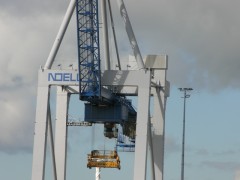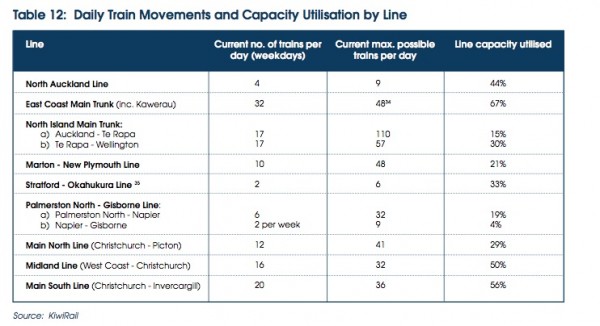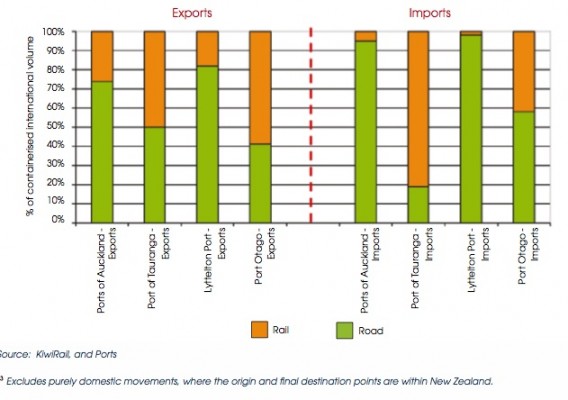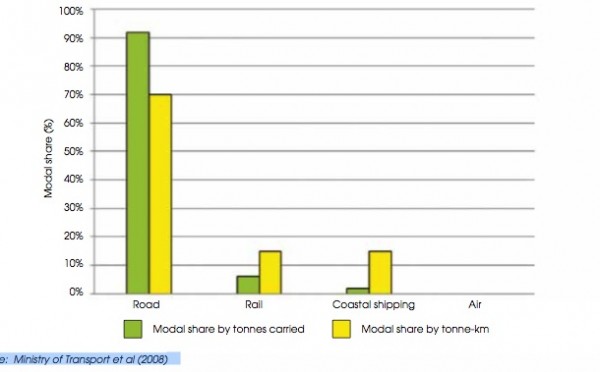Tauranga Port Fingered For Rail
 A report released this afternoon warns that NZ’s trade performance will become seriously damaged unless it can accommodate bigger freight ships within five years.
A report released this afternoon warns that NZ’s trade performance will become seriously damaged unless it can accommodate bigger freight ships within five years.
If not, services could become ‘boutique’ in nature, where only relatively small and old vessels (by international standards) with a higher operating cost per container can be accommodated by the ports.
And it says KiwiRail should, as a priority, ensure the $750m government funding earmarked for its turn-around plan is targeted at parts of the rail network that will support those bigger ships.
The report, released by the Shippers’ Council at today’s Ports & Shipping NZ Summit in Auckland, says Tauranga and Lyttelton should be the ports that can accommodate bigger ships.
Reasons for Tauranga over Auckland are given as:
- Freight train paths potentially being squeezed in favour of passenger train services
- Scheduling issues associated with large freight trains operating in conjunction with passenger rail services on the urban network
- Potential conflict of a 24 hours per day, 7 days per week rail freight operation from the port with any future residential and commercial property development near the rail network – in particular, around the Orakei Basin area.
The report suggests that for longer distance journeys or for large consolidated volumes (ie the more relevant surface transport journey types associated with bigger ships), rail is likely to play a greater role than coastal shipping for aggregating cargo, particularly for intra-island movements.
Whilst coastal shipping will have a role to play, the role is more limited than rail because of relatively short transit times, high cargo exchange costs and infrequent service (ie weekly or bi-weekly services, compared with multi-day services for rail). These factors combine to detract from coastal shipping’s competitive position compared to rail.
The line between Auckland and Tauranga could be a potential pressure point on the network given the potentially large volumes of cargo that could be moved between the two regions by rail (for example, via MetroPort). However, investments currently being undertaken by KiwiRail on this line alleviate this concern.
KiwiRail is completing a series of network infrastructure improvements on the Auckland to Tauranga line to increase both the capacity and reliability of the line, should additional capacity be required. This includes building two new and two extended crossing loops to double the line capacity, at a cost of approx. $5m. All work is scheduled to be completed by the first quarter of 2011.
Additional track infrastructure investment (beyond that already planned) is not required to support bigger ships in the foreseeable future.
But it expects the movement of larger volumes of cargo between some regions and ports in the future may require investment in:
- Above-rail capacity (locomotives and wagons) over and above that currently committed to
- Capability improvements at ports to increase train handling productivity and turn-around times.
 There may also be challenges for daytime rail freight movement in metro areas in key urban centres such as Auckland (due to planned expansion of urban passenger rail networks), that need addressing.
There may also be challenges for daytime rail freight movement in metro areas in key urban centres such as Auckland (due to planned expansion of urban passenger rail networks), that need addressing.
As far as short distance freight is concerned, it says 73% of freight movements are over short distances so it’s not surprising road accounts for such a large proportion of domestic freight movements. And the competitiveness of road transport has been enhanced since May after the transport minister allowed heavier trucks on the road network.
This is reflected in the higher modal share for rail and coastal shipping (15% each) when comparing tonne- km. In general, rail and coastal shipping performs more efficiently than road for the transport of long-haul bulk.













2 Comments
Those bloody boaties. They’re in with the rail lobby. How DARE they question the supremacy of road?!
Especially as our construction industry would LOVE to build a road bridge to Australia, but would be very dubious about rail tunnels